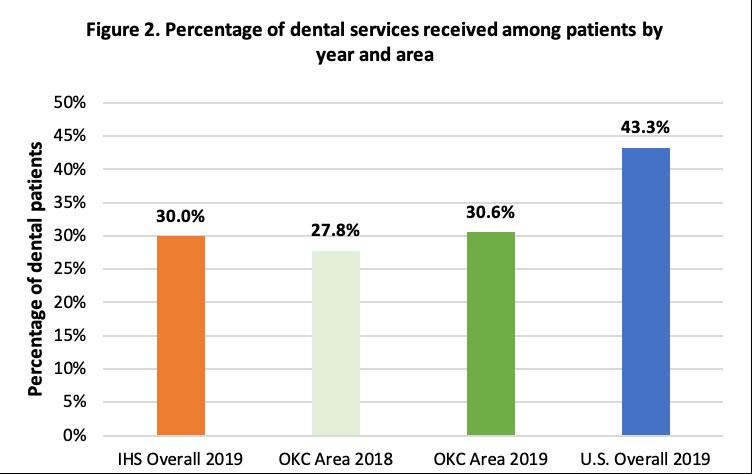
1 minute read
Topical Fluoride
Fluoride is a mineral that occurs naturally and is released from rocks into the soil, water, and air. Almost all water contains some fluoride, but usually not enough to prevent tooth decay. It can be delivered topically and systemically. Topical fluorides strengthen teeth already present in the mouth, making them more decay-resistant, whereas systemic fluorides are ingested and become incorporated into forming tooth structures. Systemic fluorides also provide topical protection, because fluoride is present in saliva, which continually bathes the teeth.8
The 2019 results showed a 0.8% decrease from 2018 in topical fluoride treatments for IHS overall.2, 12 Additionally, the 2019 GPRA results reported about a 2% increase in the IHS OKC Area from the previous 2018 report.2 The national GPRA target for topical fluoride treatments was 30% which is significantly less than children on Medicaid nationwide.
Advertisement
For the general U.S. population, no NHANES data was available for this indicator; therefore, data on Medicaid-enrolled children receiving preventative care was used for a national estimate, but is not directly comparable.16
The primary sources of fluoride include drinking water in fluoridated communities, toothpaste, beverages and food processed with fluoridated water, and other professional dental products (e.g., mouth rinses, gels, and foams).









